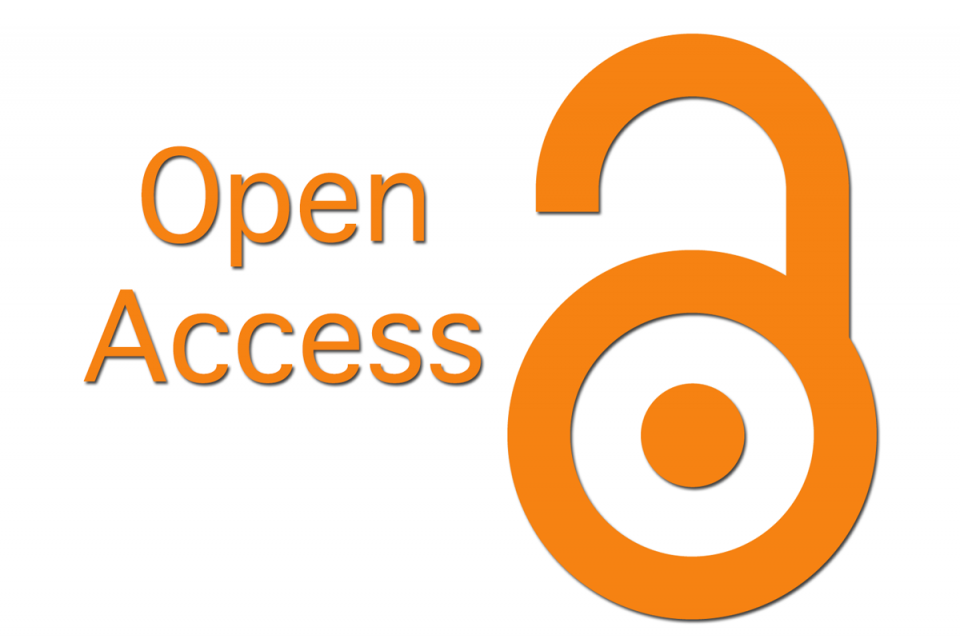EFFECTIVENESS AND SAFETY OF ORAL CALCIUM SUPPLEMENTATION DURING PREGNANCY FOR PREVENTION OF PREECLAMPSIA: A COMPREHENSIVE SYSTEMATIC REVIEW
DOI:
https://doi.org/10.61841/rftrx524Keywords:
Calcium supplementation, effectiveness, preeclampsia, pregnancy, safety.Abstract
Background: Calcium supplementation is a promising intervention in preventing preeclampsia, a major global health concern. Clinical trials and meta-analyses show its protective effect in reducing hypertensive complications. However, the exact effectiveness and safety profile require further evaluation to guide clinical practice. This systematic review aims to enhance evidence-based decision-making in maternal health.
Methods: This systematic review adhered to PRISMA 2020 guidelines and focused exclusively on full-text articles published in English between 2015 and 2025. Editorials and review articles without a DOI were excluded to preserve the integrity of high-quality sources. A literature review was conducted utilizing reputable databases, including ScienceDirect, PubMed, and SagePub, to identify relevant studies.
Result: The initial database search yielded over 30 relevant publications on the topic. Following a comprehensive three-stage screening process, eight studies met the specified inclusion criteria and were selected for in-depth analysis. A comprehensive critical evaluation was conducted for each study, enabling an in-depth analysis of the effectiveness and safety of oral calcium supplementation during pregnancy for the prevention of preeclampsia. This systematic approach ensured that the analysis was grounded in high-quality evidence, aligned with the study's objectives, and capable of providing significant insights into this complex association.
Conclusion: Calcium supplementation is an effective measure to reduce preeclampsia risk, especially in those with insufficient dietary intake. The WHO recommends 1.5-2 grams daily, enhancing vascular stability and hypertension. However, individual reactions may vary, necessitating personalized strategies. Future studies should optimize dosage recommendations.
References
Dimitriadis, E., Rolnik, D. L., Zhou, W., Estrada-Gutierrez, G., Koga, K., Francisco, R. P. V., Whitehead, C., Hyett, J., Da Silva Costa, F., Nicolaides, K., & Menkhorst, E. (2023). Pre-eclampsia. Nature Reviews Disease Primers, 9(1). https://doi.org/10.1038/s41572-023-00417-6
Ngene, N. C., & Moodley, J. (2024). Preventing maternal morbidity and mortality from preeclampsia and eclampsia particularly in low- and middle-income countries. Best Practice & Research Clinical Obstetrics & Gynaecology, 94, 102473. https://doi.org/10.1016/j.bpobgyn.2024.102473
Hofmeyr, G. J., Lawrie, T. A., Atallah, Á. N., & Torloni, M. R. (2018). Calcium supplementation during pregnancy for preventing hypertensive disorders and related problems. The Cochrane database of systematic reviews, 10(10), CD001059. https://doi.org/10.1002/14651858.CD001059.pub5
Ushida, T., Tano, S., Matsuo, S., Fuma, K., Imai, K., Kajiyama, H., & Kotani, T. (2025). Dietary supplements and prevention of preeclampsia. Hypertension Research. https://doi.org/10.1038/s41440-025-02144-9
Kumsa, H., Mislu, E., Arage, M. W., Abate, B. B., Beriye, M., Reda, M. M., & Yimer, N. B. (2025). Effects of calcium supplementation on the prevention of preeclampsia: an umbrella review of systematic reviews and meta-analyses. Frontiers in Medicine, 12. https://doi.org/10.3389/fmed.2025.1434416
Villa-Etchegoyen, C., Lombarte, M., Matamoros, N., Belizán, J. M., & Cormick, G. (2019). Mechanisms Involved in the Relationship between Low Calcium Intake and High Blood Pressure. Nutrients, 11(5), 1112. https://doi.org/10.3390/nu11051112
Zhang, F., & Li, W. (2024). The complex relationship between vitamin D and kidney stones: balance, risks, and prevention strategies. Frontiers in Nutrition, 11. https://doi.org/10.3389/fnut.2024.1435403
Prasojo, A. K., Lestari, P. M., Ansyori, H., & Theodorus, N. (2020). The role of giving high dose calcium for preventing preeclampsia. Indonesian Journal of Obstetrics and Gynecology, 207–2015. https://doi.org/10.32771/inajog.v8i4.1112
Gomes, F., Ashorn, P., Askari, S., Belizan, J. M., Boy, E., Cormick, G., Dickin, K. L., Driller-Colangelo, A. R., Fawzi, W., Hofmeyr, G. J., Humphrey, J., Khadilkar, A., Mandlik, R., Neufeld, L. M., Palacios, C., Roth, D. E., Shlisky, J., Sudfeld, C. R., Weaver, C., & Bourassa, M. W. (2022). Calcium supplementation for the prevention of hypertensive disorders of pregnancy: current evidence and programmatic considerations. Annals of the New York Academy of Sciences, 1510(1), 52–67. https://doi.org/10.1111/nyas.14733
Pokhrel, K. N., Thapa, S., Garner, P., Caws, M., Dhital, R., Gurung, S. C., Fox, T., & Shrestha, S. (2022). Should all pregnant women take calcium supplements in Nepal? GRADE evidence to policy assessment. Global Health Action, 15(1). https://doi.org/10.1080/16549716.2022.2128283
Woo Kinshella, M. L., Sarr, C., Sandhu, A., Bone, J. N., Vidler, M., Moore, S. E., Elango, R., Cormick, G., Belizan, J. M., Hofmeyr, G. J., Magee, L. A., von Dadelszen, P., & PRECISE Network (2022). Calcium for pre-eclampsia prevention: A systematic review and network meta-analysis to guide personalised antenatal care. BJOG : an international journal of obstetrics and gynaecology, 129(11), 1833–1843. https://doi.org/10.1111/1471-0528.17222
Rocha, T., Allotey, J., Palacios, A., Vogel, J. P., Smits, L., Carroli, G., Mistry, H., Young, T., Qureshi, Z. P., Cormick, G., Snell, K. I. E., Abalos, E., Pena-Rosas, J., Khan, K. S., Larbi, K. K., Thorson, A., Singata-Madliki, M., Hofmeyr, G. J., Bohren, M., . . . Thangaratinam, S. (2023). Calcium supplementation to prevent pre-eclampsia: protocol for an individual participant data meta-analysis, network meta-analysis and health economic evaluation. BMJ Open, 13(5), e065538. https://doi.org/10.1136/bmjopen-2022-065538
Dwarkanath, P., Muhihi, A., Sudfeld, C. R., Wylie, B. J., Wang, M., Perumal, N., Thomas, T., Kinyogoli, S. M., Bakari, M., Fernandez, R., Raj, J., Swai, N. O., Buggi, N., Shobha, R., Sando, M. M., Duggan, C. P., Masanja, H. M., Kurpad, A. V., Pembe, A. B., & Fawzi, W. W. (2024). Two randomized trials of Low-Dose calcium supplementation in pregnancy. New England Journal of Medicine, 390(2), 143–153. https://doi.org/10.1056/nejmoa2307212
Ushida, T., Tano, S., Matsuo, S., Fuma, K., Imai, K., Kajiyama, H., & Kotani, T. (2025). Dietary supplements and prevention of preeclampsia. Hypertension Research. https://doi.org/10.1038/s41440-025-02144-9
Villa-Etchegoyen, C., Lombarte, M., Matamoros, N., Belizán, J. M., & Cormick, G. (2019). Mechanisms Involved in the Relationship between Low Calcium Intake and High Blood Pressure. Nutrients, 11(5), 1112. https://doi.org/10.3390/nu11051112
Man, A. W. C., Zhou, Y., Xia, N., & Li, H. (2023). Dietary supplements and vascular function in hypertensive disorders of pregnancy. Pflugers Archiv : European journal of physiology, 475(7), 889–905. https://doi.org/10.1007/s00424-023-02810-2
Braga, A., Marinho, P. S., Nakamura-Pereira, M., Peraçoli, J. C., & Mello, C. (2024). Prediction and secondary prevention of preeclampsia from the perspective of public health management - the initiative of the State of Rio de Janeiro. Revista brasileira de ginecologia e obstetricia : revista da Federacao Brasileira das Sociedades de Ginecologia e Obstetricia, 46, e-rbgoedt3. https://doi.org/10.61622/rbgo/2024EDT03
Zhu, Q., Yu, Q., Liu, M., & Wei, Y. (2024). Effectiveness of calcium supplementation in the prevention of gestational hypertension: A systematic review and meta-analysis of randomised controlled trials. Pregnancy Hypertension, 38, 101174. https://doi.org/10.1016/j.preghy.2024.101174
Cormick, G., Moraa, H., Zahroh, R. I., Allotey, J., Rocha, T., Peña-Rosas, J. P., Qureshi, Z. P., Hofmeyr, G. J., Mistry, H., Smits, L., Vogel, J. P., Palacios, A., Gwako, G. N., Abalos, E., Larbi, K. K., Carroli, G., Riley, R., Snell, K. I., Thorson, A., . . . Bohren, M. A. (2023). Factors affecting the implementation of calcium supplementation strategies during pregnancy to prevent pre-eclampsia: a mixed-methods systematic review. BMJ Open, 13(12), e070677. https://doi.org/10.1136/bmjopen-2022-070677
Hofmeyr, G. J., Lawrie, T. A., Atallah, Á. N., Duley, L., & Torloni, M. R. (2014). Calcium supplementation during pregnancy for preventing hypertensive disorders and related problems. Cochrane Library. https://doi.org/10.1002/14651858.cd001059.pub4
Meertens, L. J. E., Scheepers, H. C. J., Willemse, J. P. M. M., Spaanderman, M. E. A., & Smits, L. J. M. (2018). Should women be advised to use calcium supplements during pregnancy? A decision analysis. Maternal & child nutrition, 14(1), e12479. https://doi.org/10.1111/mcn.12479
Reid I. R. (2025). Calcium Supplementation- Efficacy and Safety. Current osteoporosis reports, 23(1), 8. https://doi.org/10.1007/s11914-025-00904-7
Ballestín, S. S., Campos, M. I. G., Ballestín, J. B., & Bartolomé, M. J. L. (2021). Is Supplementation with Micronutrients Still Necessary during Pregnancy? A Review. Nutrients, 13(9), 3134. https://doi.org/10.3390/nu13093134
Downloads
Published
Issue
Section
License

This work is licensed under a Creative Commons Attribution 4.0 International License.
You are free to:
- Share — copy and redistribute the material in any medium or format for any purpose, even commercially.
- Adapt — remix, transform, and build upon the material for any purpose, even commercially.
- The licensor cannot revoke these freedoms as long as you follow the license terms.
Under the following terms:
- Attribution — You must give appropriate credit , provide a link to the license, and indicate if changes were made . You may do so in any reasonable manner, but not in any way that suggests the licensor endorses you or your use.
- No additional restrictions — You may not apply legal terms or technological measures that legally restrict others from doing anything the license permits.
Notices:
You do not have to comply with the license for elements of the material in the public domain or where your use is permitted by an applicable exception or limitation .
No warranties are given. The license may not give you all of the permissions necessary for your intended use. For example, other rights such as publicity, privacy, or moral rights may limit how you use the material.







